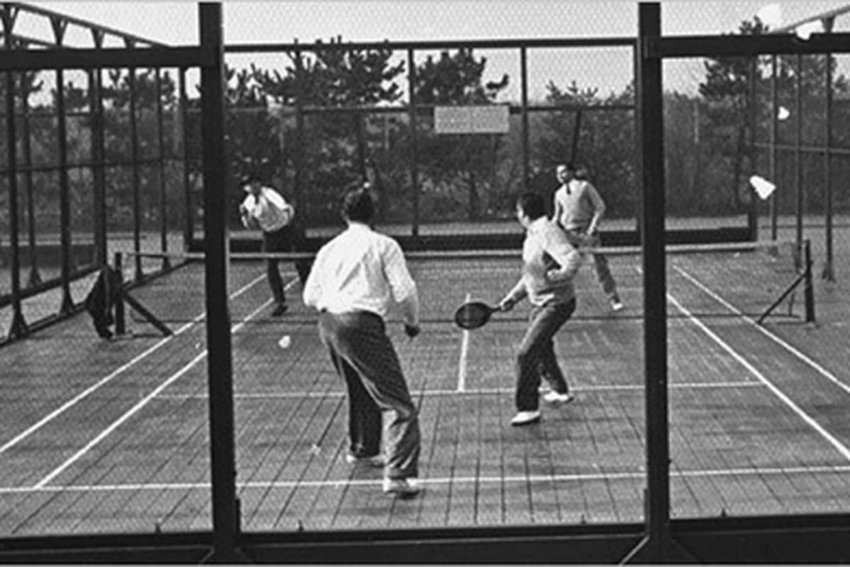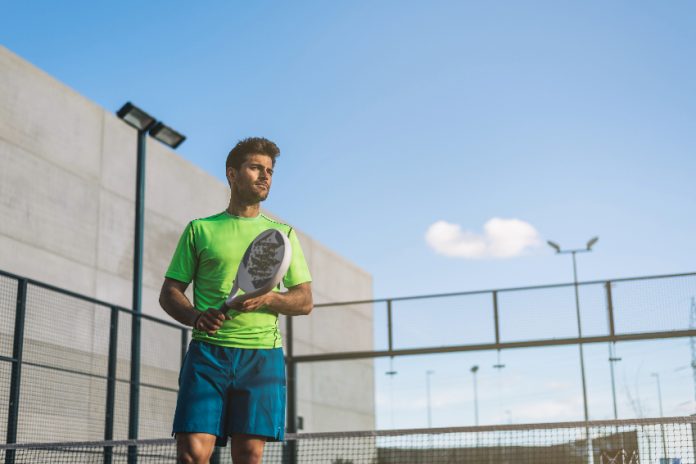In the wake of Acapulco’s devastating effects of Hurricane Otis, we want to reminisce on what made this bay such a special place. While some of you may recall the golden age of Acapulco as Mexico’s most famous Pacific coast beach resort in the 1960s and 1970s, you may not be aware that during those years, a new sport was being born in the backyard of a millionaire’s beach house, right here in Acapulco.
It was the 1960s, and Mexican businessman Enrique Corcuera wanted a fronton court in his Acapulco house. He didn’t have the space for it, so he built a smaller, 20 by 30 meter court and placed side walls to prevent the balls from crossing into the neighboring field. The game became popular amongst his friends and family, and in no time European royalty took padel overseas.

Today, a sport that began as an elite pastime during the golden age of Acapulco has become a global sensation growing more popular by the minute.
A hobby for the rich and the famous
Corcuera was an avid fan of fronton and tennis, but he only had a 20 meter long, 10 meter wide piece of land at his home in Las Brisas, Acapulco, to build a court on. “I thought I could use that piece of land to play a ball game and build a small fronton court or something similar,” he said in an interview with Padel Life magazine.
In that area, he built a court with a net in the center. The game rules were simple: players would follow tennis rules and use the walls to bounce the ball. To play the game, they would use wood rackets that Corcuera had kept from paddle tennis and tennis balls. “We tried with different balls, and we noticed that the right ones were the tennis balls,” he said.
“It turned out to be a fun, easy and enjoyable game, and one that my friends played with pleasure,” he said. Corcuera’s new sport began to grow in popularity among Mexico’s elite and became known as “padel Corcuera.” As the game became more popular, people began referring to it as simply “padel.”
The international exposure of padel
Padel was introduced to Spain in 1970 by Prince Alfonso of Hohenlohe-Langenburge, who had played the game during the summer holiday at Corcuera’s Acapulco home.
Alfonso, who founded the Marbella Club Hotel in 1954 as a meeting place for the elite, built the first padel courts outside of Mexico in 1974, introducing the sport to Europe. However, he made some alterations to Corcuera’s original idea to make the game more competitive: one of these ideas included wire fences on the sides of the court instead of walls.
During the 1980s and ‘90s, the courts hosted the famous Pro-Am padel tournament, which was sponsored by the Bilbao-based menswear store Smith & Smith. The owner of these shops was Julio Alegría Artiach, considered one of the most prominent figures in the history of padel due to his vision, promotion, investment, and lifelong dedication to the institutional management of the game.
When Spanish King Juan Carlos I and former Wimbledon champion Manolo Santana began to play the game, its popularity quickly increased.
From Spain, the sport traveled back to the Americas thanks to Julio Menditeguy, an Argentine millionaire and regular guest at the Marbella Club. Today, padel is so popular in Argentina that many think the sport was invented there, with over 2 million players and more than 10,000 padel courts in the country.
The International Padel Federation was founded in 1991, with the first Padel World Championship taking place the following year with the participation of teams from 11 countries. The tournament went on for over a decade until the World Padel Tour was born in 2012. It is now the largest professional padel championship in the world.
In 1992, the Mexican Padel Federation was created. Its founding members included Enrique’s wife Viviana Corcuera, their son Luis Corcuera and lawyer Ignacio Soto Borja y Anda, one of the sport’s greatest promoters.
How is padel played today?

Padel is frequently played on cement surfaces, but there are also courts with synthetic grass floors and supreme courts.
A padel court is 20 meters long by 10 meters wide, with 3-meter-tall walls. A mesh or metal fabric borders the rest of the perimeter. The net and ball are similar to those used in tennis.
Padel rackets are 45 centimeters long and weigh an average of 450 grams. They have padded grips and are made of wood, rubber and graphite, among other materials. Racket faces are covered in holes for aerodynamics.
Inspired by the rules of tennis, padel is played only in pairs and in sets of three. To serve, the player must hit the ball below the waist and diagonally.
Will padel ever be recognized as an Olympic game?

International sports federations seeking to add their sport to the Olympics must prove that their sport meets the following criteria set by the International Olympic Committee (IOC):
- The sport must have an international federation;
- It must follow the requirements established by the World Anti-Doping Code;
- The sport shouldn’t use motorized equipment;
- The sport must be practiced at least in 75 countries on four continents in the men’s category and in 40 countries on three continents in the women’s category.
While padel meets three of the criteria listed above, it does not yet meet the fourth requirement.
However, the IOC has granted padel a membership status in the Association of IOC Recognised International Sports Federations. This marks an important milestone, as it represents the beginning of the IOC’s determination of whether padel meets the necessary criteria for inclusion as an Olympic sport.
New sports are selected for the Olympics seven years in advance of each edition of the games. The next opportunity for padel players to participate would be in 2032, assuming the sport meets IOC criteria by 2025.
Recognition in Mexico
In 2022, the Mexican Senate granted posthumous recognition to Enrique Corcuera, who passed away in 1999, as well as to Viviana Corcuera and Ignacio Soto Borja y Anda for the creation and dissemination of padel as a sport that began in Mexico. “With this recognition, we tell the world that Mexico is a place of creativity and talent,” said Senate majority leader Ricardo Monreal Ávila.
Acapulco’s fun vibe and high-profile visitors helped Corcuera’s vision for an easy and enjoyable game transcend his backyard into the world. Today, millions worldwide enjoy playing this game just as Corcuera and his friends did in Acapulco’s golden age.
By Mexico News Daily writer Gabriela Solís
